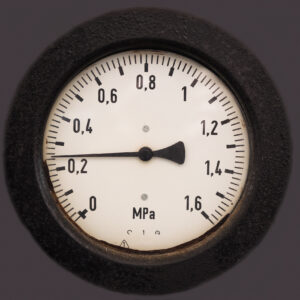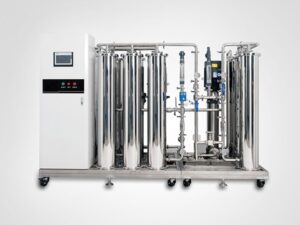Abstract
Pressure gauge connection dimensions are critical for ensuring proper installation, sealing, and performance in various industrial applications. This article provides a comprehensive overview of international standards governing pressure gauge connection specifications, with particular focus on the Chinese GB/T 5645-2008 standard for flared pressure gauge couplings. Understanding these specifications is essential for engineers, technicians, and procurement specialists working with fluid power transmission systems and general-purpose piping networks across industries such as petrochemical, manufacturing, aerospace, and marine engineering.
1 Introduction to Pressure Gauge Connection Standards
Pressure gauges require precise connection specifications to ensure leak-free operation and accurate pressure measurement across diverse applications. The standardization of these connections allows for interchangeability between components from different manufacturers, reduces installation errors, and enhances system safety. Different regions and applications have developed specific connection standards that define parameters including thread type, pitch, diameter, and pressure ratings.
The most common thread standards for pressure gauge connections include metric threads (M), British Standard Pipe threads (G/R), and National Pipe Thread standards (NPT). Each system has distinct characteristics: metric threads feature a 60-degree thread angle and are specified by diameter and pitch measurements; British Standard Pipe threads have a 55-degree thread angle and are sized in inches; while NPT threads incorporate a tapered design for improved sealing capabilities .
2 GB/T 5645-2008 Standard for Flared Pressure Gauge Couplings
The GB/T 5645-2008 standard, titled “Flared couplings – Connector for pressure gauge,” specifies the dimensional requirements and technical specifications for flared pressure gauge couplings and connector bodies in China. Published on May 7, 2008, and implemented on November 1, 2008, this standard replaced the previous GB/T 5645.1-1985 and GB/T 5645.2-1985 standards, integrating and updating their content .
2.1 Scope and Application
This standard applies to tubing with outer diameters ranging from 6mm to 14mm and systems with maximum working pressures between 3.5MPa and 16MPa. It is designed for use in hydraulic fluid power transmission systems and general-purpose piping applications across various industries . The standard covers both the flared tube couplings and the corresponding connector bodies that together form complete pressure gauge connection systems.
2.2 Key Technical Revisions
The 2008 revision introduced several important updates from the previous 1985 standards:
- Integration of two previous standards into a single comprehensive document
- Modification of the English name to more accurately reflect the content
- Addition of 55° non-sealing pipe threads (G series) to accommodate international compatibility
- Reduction of manufacturer-controlled parameters to streamline production
- Adjustment of tolerances according to current tolerance and fit standards
- Removal of surface roughness specifications, which are now covered in GB/T 5653 (Technical conditions for flared tube fittings)
3 Pressure Gauge Connection Thread Specifications
Pressure gauge connection threads vary depending on the instrument size, application requirements, and regional standards. The correlation between pressure gauge dial diameters and their connection threads has been largely standardized.
3.1 Metric Thread Connections
Metric threads follow the M20×1.5 format, where “20” indicates the thread diameter in millimeters, and “1.5” signifies the pitch (distance between threads). The “M” designation refers to the 60-degree thread angle characteristic of metric threads. Standard metric connections for different gauge sizes include :
- φ40mm gauges: M10×1 thread
- φ60mm gauges: M14×1.5 thread
- φ100mm and φ150mm gauges: M20×1.5 thread
3.2 Imperial/BSP Thread Connections
British Standard Pipe (BSP) threads use the G-series designation (e.g., G1/2″) where the number indicates the nominal pipe diameter in inches. These threads feature a 55-degree thread angle and are typically used in non-self-sealing applications. Common BSP thread applications include :
- G1/4″ threads: Typically used with φ100mm gauges
- G1/8″ and G3/8″ threads: Commonly found on φ60mm gauges
- G1/2″ threads: Standard for φ100mm and φ150mm gauges
The “ZG” designation (now largely replaced by “R”) indicates a 55-degree tapered pipe thread (R1/2″), which provides improved sealing capabilities compared to parallel threads.
3.3 NPT Thread Connections
National Pipe Tapered (NPT) threads follow American standards and are designated by size (e.g., 1/2″NPT). These threads feature a 60-degree thread angle and a tapered design that creates a seal through thread interference. Common NPT sizes for pressure gauges include 1/4NPT for smaller gauges and 1/2NPT for φ100mm and φ150mm gauges .
4 Material Specifications for Pressure Gauge Connections
The material selection for pressure gauge connections depends primarily on the medium being measured and the environmental conditions of the application.
- Carbon Steel: Used for general service media and ammonia pressure measurement systems, offering cost-effectiveness and adequate strength for many industrial applications.
- Stainless Steel: Preferred for corrosive environments and specialized applications, with common grades including 304SS, 316SS, and 316L for enhanced corrosion resistance.
- Special Alloys: Including titanium and Monel for extreme service conditions involving highly corrosive media or extreme temperatures .
5 Internationalization of Chinese Standards
The GB/T 5645-2008 standard has been translated into English as part of China’s effort to align with international technical practices and support the global distribution of Chinese-manufactured components. The English version, published as GB/T 5645-2008E, facilitates international trade by providing technical specifications in a universally accessible language .
This standardization effort reflects the growing importance of Chinese specifications in global industrial markets. The flared tube fitting series standards, including GB/T 5645-2008, have gained recognition because they combine international technical requirements with existing domestic product designs and manufacturing technologies. These standards now support the export of Chinese hydraulic components and major equipment, providing technical foundation for international trade .
6 Conclusion
The standardization of pressure gauge connection dimensions, particularly through specifications like GB/T 5645-2008 for flared couplings, provides critical technical consistency across international markets. These standards ensure compatibility between components from different manufacturers, enhance system safety and reliability, and facilitate global trade in industrial components.
Understanding the specific requirements for different connection types—including metric, BSP, and NPT threads—enables proper selection and installation of pressure gauges across various applications. As industrial systems become increasingly globalized, the harmonization of these standards plays a vital role in maintaining system integrity while supporting the international exchange of equipment and components.
The continued development and internationalization of connection standards will further enhance the interoperability of pressure measurement systems worldwide, contributing to safer and more efficient industrial operations across sectors including oil refining, chemical processing, light industry, textiles, national defense, metallurgy, aviation, and marine applications .



